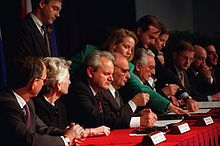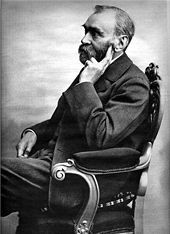Cross posted from The Stars Hollow Gazette
This is your morning Open Thread. Pour your favorite beverage and review the past and comment on the future.
Find the past “On This Day in History” here.
December 18 is the 352nd day of the year (353rd in leap years) in the Gregorian calendar. There are 13 days remaining until the end of the year.
On this day in 1918, the House of Representatives passed the 18th Amendment to the Constitution, along with the Volstead Act, which defined “intoxicating liquors” excluding those used for religious purposes and sales throughout the U.S., established Prohibition in the United States. Its ratification was certified on January 16, 1919. It was repealed by the Twenty-first Amendment in 1933, the only instance of an amendment’s repeal. The Eighteenth Amendment was also unique in setting a time delay before it would take effect following ratification and in setting a time limit for its ratification by the states.
Section 1. After one year from the ratification of this article the manufacture, sale, or transportation of intoxicating liquors within, the importation thereof into, or the exportation thereof from the United States and all territory subject to the jurisdiction thereof for beverage purposes is hereby prohibited.
Section 2. The Congress and the several States shall have concurrent power to enforce this article by appropriate legislation.
Section 3. This article shall be inoperative unless it shall have been ratified as an amendment to the Constitution by the legislatures of the several States, as provided in the Constitution, within seven years from the date of the submission hereof to the States by the Congress.
The amendment and its enabling legislation did not ban the consumption of alcohol, but made it difficult to obtain it legally.
Following significant pressure on lawmakers from the temperance movement, the House of Representatives passed the amendment on December 18, 1917. It was certified as ratified on January 16, 1919, having been approved by 36 states. It went into effect one year after ratification, on January 17, 1920. Many state legislatures had already enacted statewide prohibition prior to the ratification of the Eighteenth Amendment.
When Congress submitted this amendment to the states for ratification, it was the first time a proposed amendment contained a provision setting a deadline for its ratification. The validity of that clause of the amendment was challenged and reached the Supreme Court, which upheld the constitutionality of such a deadline in Dillon v. Gloss (1921).
Because many Americans attempted to evade the restrictions of Prohibition, there was a considerable growth in violent and organized crime in the United States in response to public demand for illegal alcohol. The amendment was repealed by the Twenty-First Amendment on December 5, 1933. It remains the only constitutional amendment to be repealed in its entirety.



 On this day in 1995,
On this day in 1995,  On this day in 1642,
On this day in 1642,  New Zealand is one of the most recently settled major landmasses. The first known settlers were Eastern Polynesians who, according to most researchers, arrived by canoe in about AD 1250-1300. Some researchers have suggested an earlier wave of arrivals dating to as early as AD 50-150; these people then either died out or left the islands. Over the following centuries these settlers developed into a distinct culture now known as Maori. The population was divided into iwi (tribes) and hapu (subtribes) which would cooperate, compete and sometimes fight with each other. At some point a group of Maori migrated to the Chatham Islands where they developed their distinct Moriori culture.
New Zealand is one of the most recently settled major landmasses. The first known settlers were Eastern Polynesians who, according to most researchers, arrived by canoe in about AD 1250-1300. Some researchers have suggested an earlier wave of arrivals dating to as early as AD 50-150; these people then either died out or left the islands. Over the following centuries these settlers developed into a distinct culture now known as Maori. The population was divided into iwi (tribes) and hapu (subtribes) which would cooperate, compete and sometimes fight with each other. At some point a group of Maori migrated to the Chatham Islands where they developed their distinct Moriori culture.
 On this day in 1946,
On this day in 1946,  In 1953,
In 1953,  On this day in 1901,
On this day in 1901, 
 The Joint Committee on the Conduct of the War was a
The Joint Committee on the Conduct of the War was a  John and I are in our Dakota kitchen in the middle of the night. Three cats – Sasha, Micha and Charo – are looking up at John, who is making tea for us two.
John and I are in our Dakota kitchen in the middle of the night. Three cats – Sasha, Micha and Charo – are looking up at John, who is making tea for us two.
